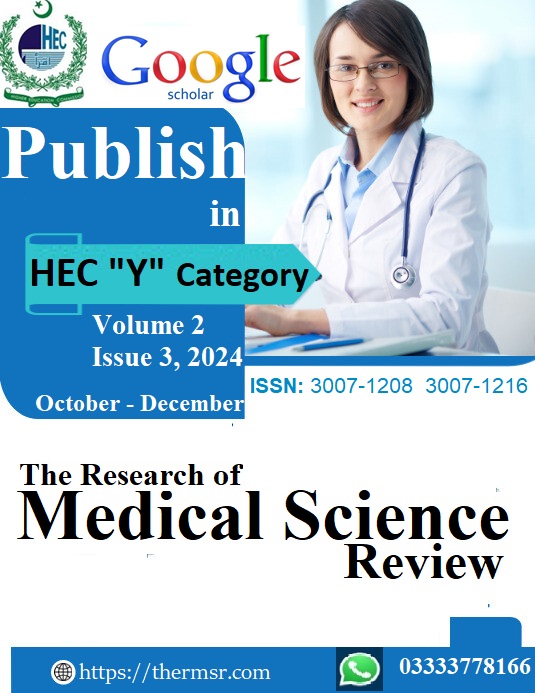MRI FINDINGS AND PAIN PATTERNS IN LUMBOSACRAL INJURIES: A COMPARATIVE STUDY OF ROAD TRAFFIC ACCIDENTS, WEIGHTLIFTING INJURIES, AND BLUNT TRAUMA
Keywords:
Lumbosacral injuries, MRI, Road Traffic Accidents, Weightlifting, Blunt Trauma, Disc Bulge, Lumbar Stenosis, Pain PatternsAbstract
Background: Road traffic accidents (RTAs), weightlifting activities, and blunt trauma incidents are common causes of lumbosacral injuries. Nerve injuries can cause pain, deformity, and dysfunction, so accurate diagnosis and effective treatment are critical. MRI provides a more detailed view for evaluating conditions of the spine which may not show up well on standard imaging, such as X-rays.
Objective: To investigate the different characters of pain and the MRI findings linked to lumbosacral injuries due to RTA, weight lifting, and blunt trauma. The purpose of this study was to assess the association between mechanism of injury and pain severity and spinal pathology on brain MRI
Methods: Cross-sectional study among 150 participants aged between 18 to 55 years. Demographic data, pain intensity and MRI findings were assessed. Disc bulge, lumbar stenosis, disc desiccatory changes were looked into through MRI scans. A Chi-Square test was conducted to examine relationships between injury type and MRI these criteria
Results: The most common symptom was low back pain in both sides, and pain with radiation was more frequent in blunt traumas with 77.1% and RTAs 76.5%. MRI findings showed that disc bulge was the most prevalent finding (25.3%) followed by lumbar stenosis (21.3%) and disc desiccatory changes (18%). The most common injury was lumbar stenosis and disc bulge from blunt trauma injuries, and disc desiccatory changes from weightlifting injuries.
Conclusion: MRI is a key element to distinguish lumbosacral injury patterns and elucidate spinal injuries in relation to trauma type. Recent advances in MRI technology allow for timely and accurate diagnoses, paving the way for interventional procedures to relieve underlying conditions.
Downloads
Downloads
Published
Issue
Section
License

This work is licensed under a Creative Commons Attribution-NonCommercial-NoDerivatives 4.0 International License.














